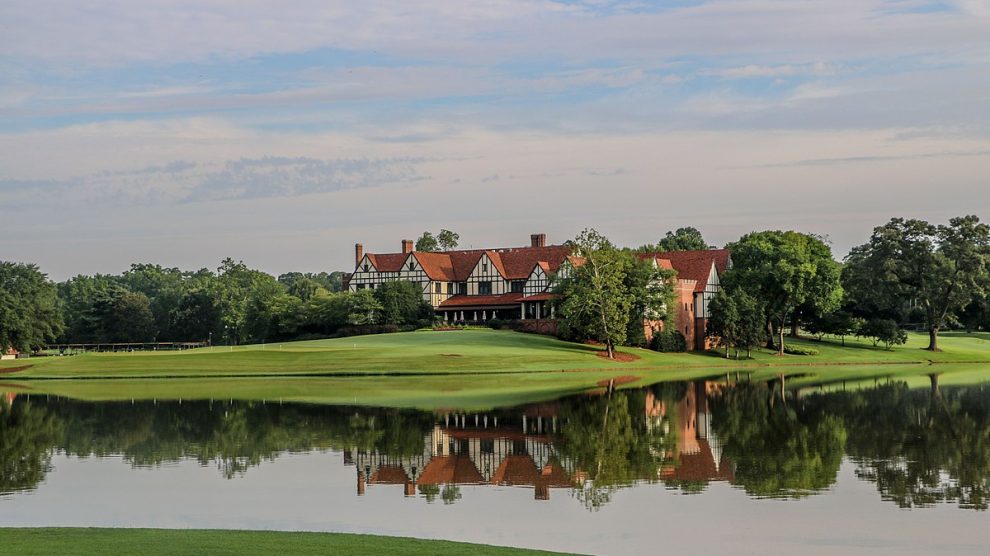Well. We made it. The Tour Championship. It’s been a pretty great golf season, and one of the last before changes come to make this tournament occur before everyone stops watching golf and only watches the NFL on Sunday (and Thursday, and Monday). It would make sense that this tournament should be contested at a course that is equally iconic as the Tour would like the FedEx Cup to be seen. Instead, it's held at East Lake Golf Club in Atlanta. A fine course but not one that leaves neither die-hard nor casual fans in awe.
East Lake Golf Club history
Established in 1904, East Lake was the home course of the legendary golfer Bobby Jones, and much of its clubhouse serves as a tribute to his accomplishments. The club initially had no golf course, but four years after it was founded, it had more than 700 members. The club leaders soon realized the increased interest in golf and acquired property in the “suburbs” of Atlanta to create a country club, engaging golf architect Tom Bendelow to lay out the course. The grand opening of the Bendelow course took place on July 4, 1908. A young (age 6) Bobby Jones was in attendance that day with his father, “Colonel” Robert P. Jones who would late serve as president of the club from 1937–42.
However, in 1913, renowned golf course architect Donald Ross redesigned the Bendelow course at East Lake. The remodeled course featured a routing plan that provided each nine holes to conclude at the clubhouse. Previously the original course had nine holes that oddly finished across the lake from the clubhouse. By the 1970s, a housing project was built upon the No. 2 course and the surrounding area slowly devolved. In the 1980s, the course/club was mostly forgotten. However, in 1993, a local charitable foundation purchased East Lake with the intent to restore it as a tribute to Bobby Jones and the club’s other great amateur golfers. The East Lake Foundation has used the renovation as a catalyst for revitalizing the surrounding community. In 1994, Rees Jones restored Donald Ross’s original golf course layout.
After some additional modifications (changing the putting surfaces from Bentgrass to Bermudagrass, altering bunkers, etc.) the course is much more Rees Jones than Donald Ross. The greens are now all designed for aerial approaches and the deep bunkers look nothing like any Ross built in his lifetime. Another element that makes the course a lot less interesting is the fact that 14 holes move either East-West or West-East making for a very ‘down and back’ feeling as you play. The average winning score (*adjusted for Tiger’s runaway victory in 2007 when he finished at -23, and eight shots better than second place) for the TOUR Championship at East Lake is -11. So, look for the leaders to be shooting around 67 (Par 70) each day.
Holes to Watch
Hole 1 - PAR 4, 469 Yards
A par 5 that has been shortened to play as a par 4 for the Tour Championship, this hole requires that the tee shot be long and to the left side of the fairway to allow players to see the putting surface. The second shot will be a mid-to long-iron into a fairly large green. The green slopes severely from back right to front left, making lag putting from the back treacherous.
Hole 14 - PAR 4, 520 Yards
The second of two par 5s that have been shortened to play as par 4s for the Tour Championship, this 520-yard hole will play much shorter than the yardage as the drive will pitch forward on the downslope of the fairway. The second shot will be a long iron from a downhill lie making it tough to get to tight hole locations.
Hole 18 - PAR 5, 600 Yards
Maybe a perfect example of the golf ball going too far. A long drive provides an opportunity to reach this green in two, especially if the hole plays downwind (a la Rory last year when he hit an iron from 211 to 6 feet but missed the eagle putt). Yes, players hit this 600-yard hole in two. The second shot will be either a mid- to long-iron layup short of a fairway bunker on the left or a fairway wood try for the green in two. The green is guarded in front by deep bunkers, and anything long will be a difficult up-and-down.

